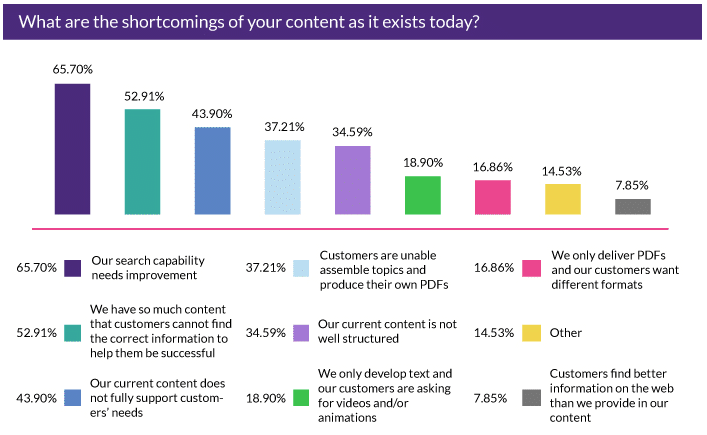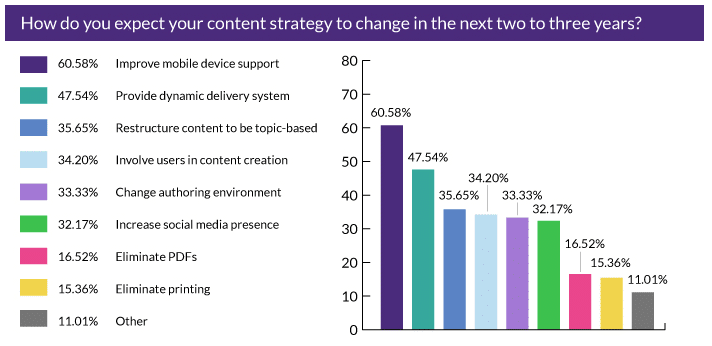New research from Data Conversion Laboratory (DCL) and the Center for Information Development Management (CIMD) probes and tracks how, and if, organizations and individual pros are adapting their processes and content to be more viable in an increasingly electronic world—and according to results of the fifth annual Following the Trends—Is Your Content Ready? survey, a surprising 51 percent of those polled responded “No,” that their content is not ready, and that’s a 21 percent increase over last year.
The fact that more than half of people polled in 2016 say their content isn’t ready (vs. 30 percent in 2015) raises an important question: Why?
“My sense is that the bar is constantly rising both in functionality and data volume, and if you’re not keeping up, you’re falling behind. I think the people who thought they’d just wait and see, are finding that they’re now that much further behind,” said Mark Gross, DCL’s president, in a news release.
Tellingly, 66 percent said their “search capability needs improvement;” 53 percent “have so much content that customers cannot find the correct information to help them be successful;” and 44 percent noted that their “current content does not fully support customers’ needs.” Judging from that sample alone, the trend is clearly that professionals and organizations are concerned about their customers’ ability to easily find and consume their content.

Spanning five years, this survey has attracted almost 1900 respondents, with 2017’s drawing in 369 professionals. Questions covered a wide range of topics around content, including types of content being developed (User Manuals, Release Notes, Training Materials), authoring tools (XML author, MS Word, FrameMaker), and mobile strategies, as well as classic concerns like staff, budgets, and time.
“There is comfort in knowing you are not alone in the challenges you face,” said Dawn Stevens, director of CIDM and president of Comtech Services, in the release. “I think so many participate in this survey year after year to see where they are in comparison to other companies, and to ensure that they are not being left behind.”
Who were this year’s survey respondents? Over half of those who participated were “Writers,” with the majority of others being “Managers,” “Information Architects” and “Content Strategists.” Sixty percent said their industry was “Technology,” and 15 percent were in “Industry.” “Professionals,” “Life Sciences,” “Publishers” and “Other” made up most all other industries.
When asked about the barriers or challenges respondents are facing when trying to get their content ready for the future, time, budget, resources and “content not designed or written appropriately” featured prominently. When queried about their content conversion strategies, 59 percent of respondents said they convert legacy content in-house, with 48 percent saying they train their in-house team, and 46 percent planning to rewrite their content before they convert. Further, 64 percent said their content is currently not well structured and 61% noted they have insufficient staff to fix it.
“I think this is one of those cases where perfect is the enemy of good. Rewriting content is a big undertaking and can lead to years of delays. I have found that automated conversion accompanied by partial rewrites get you most of the way there, but years earlier,” said Gross.








